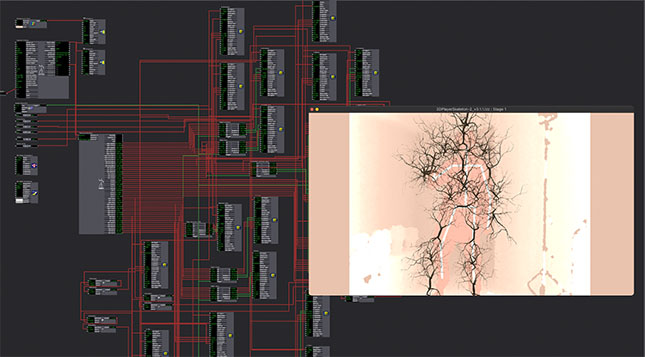
Mycelium People Screen Test
Motion tracking and capture
Near $0 budget motion tracking and capture
A decade after the launch of the Kinect, the motion-sensing input device by Microsoft for the Xbox 360 video game console, there continues to be value in working with its motion tracking capabilities. Devices like the Kinect contain RGB cameras and infrared projectors and detectors that map depth through either structured light or time of flight calculations, which can, in turn, perform real-time gesture recognition and skeletal body detection, among other capabilities. Of course, motion tracking and capture have come a long way, and its implementation within the emerging Metaverse will dictate the critical aspects that move the technology and process forward. According to a 2021 report by Emilio Campa, "VR will play a key enabling role; VR-related technologies such as simultaneous location and mapping (SLAM), facial recognition, and motion tracking will be vital for developing metaverse-based use cases." Microsoft launched the Kinect in North America in November 2010. Almost immediately, Adafruit Industries offered a $1,000 bounty to the first person to figure out how to build an open-source driver for it. Microsoft responded, telling CNET it does not condone the modification of its products and that the hardware has built-in safeguards to keep such customisations from happening. Microsoft also pledged to "work closely with law enforcement and product safety groups to keep Kinect tamper-resistant." Adafruit bumps the reward money up $2,000 as a result. A hacker named Hector wins Adafruit's now-$3,000 contest for creating an open-source driver for Kinect.
OpenNI or Open Natural Interaction is an industry-led non-profit organisation. It is an open-source software project focused on certifying and improving the interoperability of these devices and the software applications that use them. The organisation was created in November 2010, launched to the public on December 8. One of the prominent members was PrimeSense, the company behind the technology used in the Kinect. In December 2010, PrimeSense released its open-source drivers along with motion tracking middleware called NITE. PrimeSense later announced that it had teamed up with a computer manufacturer to develop a device similar to Kinect, called Xtion, released in 2012. After the acquisition of PrimeSense by Apple, OpenNI.org shut down in 2014. However, organisations that used OpenNI subsequently preserved documentation and binaries for future use. Today, Occipital and other former partners of PrimeSense still keep a forked version of OpenNI 2 (OpenNI version 2) active as open-source software. The open-source drivers for the Kinect are compatible with several depth-sensing devices, including Intel's RealSense cameras and Orbbec's Astra Pro.
Along with very creative software releases such as NI mate and Z vector from developer Delicode, a niche user base develops work based on affordability and access. Open NI enabled software has facilitated low-cost motion tracking technology with relative ease of use and became the go-to software for extremely low-cost integration of motion tracking solutions for many years. In February 2020, TriokaTronix released an add-on for its software Isadora, which had been in the beta-testing phase for over twelve months. The Isadora OpenNI Tracker module provides full-body motion tracking and motion capture at a lower total cost than any other supported software platform available today without compromising on the extensible programming options already associated with Isadora's 'creativity server' and visual programming capability.
artists:
Russell Milledge
sponsors:
TriokaTronix provide Bonemap a complementary software license to prototype and test through the Isadora platform
Video documentation:

